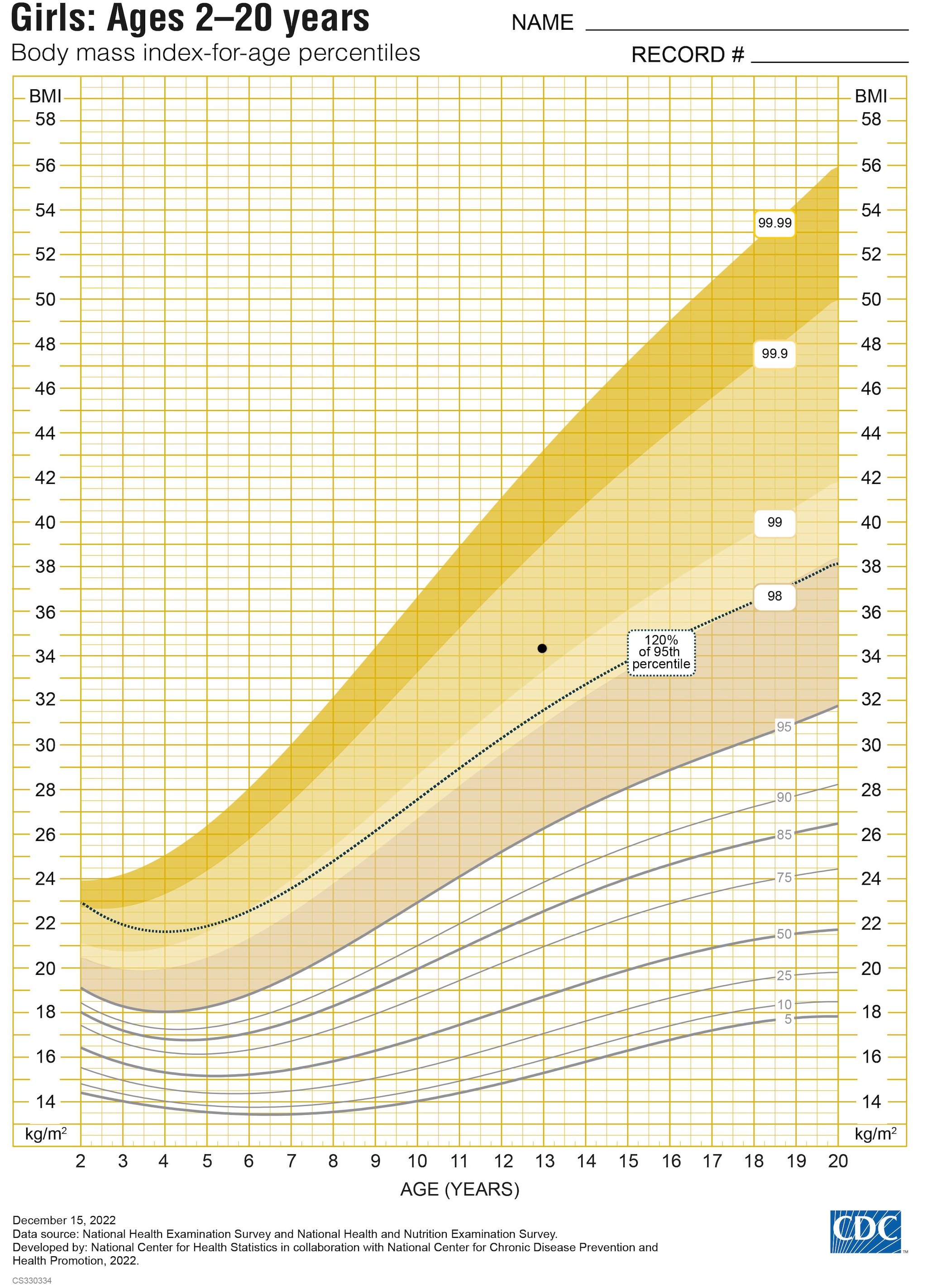Case Example 2: Extended BMI-for-Age
Olivia is a 13-year-old girl who has a height of 60 inches and weight of 175 pounds. Open the tabs below to calculate Olivia’s BMI, view her BMI on a growth chart, and learn how to interpret her Extended BMI-for-Age Percentile.
Name: Olivia
Age: 13 years
Sex: girl
Height: 60 inches
Weight: 175 pounds
BMI: 34.2
Extended BMI-for-Age Percentile: 99.2nd
 |
Because Olivia’s BMI is above the 97th percentile for her age and sex, Olivia’s doctor should plot her BMI on CDC’s Extended BMI-for-Age Growth Chart. |
Olivia has a BMI of 34.2 kg/m2, placing her at the 99.2nd percentile for age and sex. This means that Olivia’s BMI is greater than the BMIs of 99.2% of 13-year-old girls in the growth chart reference population.
Olivia’s BMI of 34.2 kg/m2 is 130% of the 95th percentile, which is in the severe obesity category. This means that Olivia’s BMI is 1.3 times higher than the BMI that is the 95th percentile for 13-year-old girls. BMIs at or above 120% of the 95th percentile for sex and age, or BMIs that are 35.0 kg/m2 or above, are classified in the Severe Obesity category.
To obtain BMI metrics for your patients, visit CDC’s Child and Teen BMI Calculator or use CDC’s publicly available SAS Program or R Program.
- Which of the following is not true?
A: If a 7-year-old girl’s BMI is at the 75th percentile for sex and age, it means that her BMI is greater than BMIs of 75% of 7-year-old girls in the growth chart reference population.
B: Sex, age, height, and weight are all required to calculate BMI-for-age percentiles in children and teens.
C: In children and teens, severe obesity is defined as BMI at or above 120% of the 95th percentile for age and sex, or BMI at or above 35 kg/m2.
D: Extended BMI-for-Age Growth Charts should be used to plot and track BMIs for all children and teens.ANSWER: D – That’s correct. CDC’s Extended BMI-for-Age Growth Charts should be used to plot and track BMIs for children and teens with very high BMIs (above the 97th percentile for age and sex). These extended charts can help facilitate conversations about growth and care between providers, patients, and patients’ families.